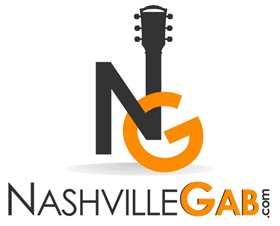Dancing and country music have always been closely intertwined, creating an atmosphere of joy and celebration.
One well-known type of country dancing is line dancing, where individuals perform synchronized movements following a predetermined sequence of steps.
In this article, we delve into the world of country line dance songs, exploring their history, notable tunes, and influence.
It showcases how country line dance songs have played a significant role in fostering a sense of community and bringing people together through the joy of dance.

The Origins of Country Line Dance
Historical Roots
Country line dance has its origins in traditional folk dances that have been a part of American culture for centuries.
The development of country line dance can be traced back to dances such as square dancing and contra dancing.
These traditional folk dances often involved groups forming lines or squares and performing synchronized dance moves to lively music.
The energetic and communal nature of these dances laid the foundation for the development of line dances within the country music scene.
Country Music’s Influence
Bluegrass music assumed a huge part in the creation and promotion of line moves. Country songs’ energetic beats, catchy melodies, and infectious beats made an excellent backdrop for line dancing.
Certain songs began to inspire line dances with choreographed moves that were synchronized with the music as country music developed over time.
These line dances gained recognition in music videos as well as at social events and dance halls.
Popularity in the 1990s
The 1990s denoted a time of colossal ubiquity for country line dancing, generally because of the far-reaching progress of Billy Beam Cyrus’ hit melody “Throbbing Breaky Heart” in 1992.
The tune’s irresistible mood and snappy melody turned into a peculiarity, and the line dance that was made explicitly for the melody acquired enormous prevalence.
Pain-filled Breaky Heart hit the dance floor with a standard crowd and started a line dance furor the nation over.
The progress of “Pain-filled Breaky Heart” made way for various other national line dance melodies to catch the public’s attention.
The 1990s saw a flood of country line dance tunes, with specialists delivering melodies that had their own dedicated line moves.
Individuals from varying backgrounds were anxious to gain proficiency with these moves and partake in the line dance frenzy, making it a social peculiarity of the time.
The line-dancing craze of the 1990s brought line-dancing into the spotlight as well as hardened its place inside the down-home music scene.
Line dances became ingrained in the culture of country music as artists and fans adopted this lively and interactive dance form.
The transition of country line dancing from a niche activity to a mainstream phenomenon in the 1990s marked a significant turning point for the genre, and its influence on the dance community continues to this day.
Characteristics of Country Line Dance Songs
Upbeat Tempo and Catchy Melodies
One of the key characteristics of country line dance songs is their lively and energetic tempo.
These songs often have spirited beats that set the pace for the dance, aiming to get people on the dance floor. The fast rhythm creates an exciting atmosphere, encouraging dancers to let loose and have fun.
Country line dance songs are known for their catchy melodies and memorable hooks, in addition to their upbeat tempo. The songs are often infectious, making it easy for dancers to connect with the music and follow the rhythm.
Country line dance songs are instantly recognizable by both dancers and listeners due to their lively tempo and catchy melodies
Simple and Repetitive Steps
Country line dance tunes feature movements that consist of simple and repetitive steps. This quality allows dancers of all skill levels to easily follow along and participate in the dance.
The repetitive nature of the steps ensures that dancers can quickly learn the routine and feel comfortable on the dance floor.
The choreography of line dances often includes a set sequence of steps that repeat throughout the song. As dancers become more familiar with the routine, this repetition helps them anticipate the movements and boosts their confidence.
The simplicity and repetition of the steps also create a sense of unity among dancers, as everyone moves in harmony, creating a visually appealing display.

Syncopated Rhythms
Country line dance songs frequently incorporate syncopated rhythms and distinct footwork patterns, giving each line dance its own unique flair.
Syncopation refers to the emphasis placed on offbeat notes, creating rhythmic complexity that adds excitement and energy to the dance.
The syncopated rhythms in country line dance songs challenge dancers to step and move in unconventional ways, adding variety and creativity to the choreography. These distinct footwork patterns contribute to the individuality and memorability of each line dance.
The combination of the lively beat, catchy melodies, simple and repetitive steps, and syncopated rhythms creates a dynamic and engaging experience for dancers.
People can come together, enjoy the music, and participate in a joyful and synchronized form of dancing while listening to country line dance songs.
Notable Country Line Dance Songs:
“Boot Scootin’ Boogie – Brooks & Dunn
One of Brooks & Dunn’s best-known country line dance songs is “Boot Scootin’ Boogie.” It’s a favorite among line dance enthusiasts due to the song’s catchy melody, energetic tempo, and lively rhythm.
The line dance movement made for this tune is known for its unmistakable moves, including grapevines, heel-toe steps, and whirls.
The “Boot Scootin’ Boogie” line dance has helped spread the word about line dancing and made it more accessible to a wider audience.
People get together to show off their dancing skills and enjoy the infectious spirit of the song at dance halls, parties, and country music events by performing this timeless country line dance.
“Copperhead Road” – Steve Earle
Steve Earle’s “Copperhead Street” is an extraordinary mix of country and rock, with an unmistakable mood and notch that has spellbound both music audience members and artists.
The song’s irresistible sound is ideal for line dancing because it combines country storytelling with rock-influenced instrumentation.
The energetic and intense nature of the song is reflected in the lively footwork patterns and line dance choreography for “Copperhead Road.”
“Copperhead Road” is a favorite choice for line dancers who want a little rock-infused excitement on the dance floor because of the song’s infectious groove and engaging line dance.
Watermelon Crawl – Tracy Byrd
The “Watermelon Crawl” of Tracy Byrd has come to symbolize summertime fun and festivities. The song perfectly captures the carefree spirit of summer with its upbeat tempo and catchy melody.
The line dance movement made for “Watermelon Creep” includes simple, easy-to-follow steps that impersonate the demonstration of slithering like a watermelon plant.
The dance has grapevines, side steps, and turns that make it a fun and playful line dance. Watermelon Creep” hosts become favorites at summer gatherings, grills, and bluegrass live concerts, giving an enthusiastic and energetic dance that unites individuals to commend the delights of the time.
These striking nation-line dance tunes lastingly affect the line-moving local area with their irresistible songs, drawing in movement and capacity to rouse individuals to stir things up around town.
They showcase the numerous songs and artists that have contributed to the vibrant world of country line dancing and represent the genre’s diversity and creativity.
Dancers who come together to enjoy the excitement and rhythm of country line dance develop a sense of unity, joy, and connection as these songs are played at dance venues and events.

Beginner Line Dances You Need to Know
| Music | Count |
| Cupid Shuffle | 32 |
| Wobble | 32 |
| Electric Slide | 18 |
| Power Jam (San Diego Version) | 24 |
| Cowboy Hustle | 32 |
Impact and Social Significance
Community Building
Country line dance is an essential part of cultivating a feeling of local area and fellowship at the following:
- Get-togethers
- Ballrooms
- Celebrations
These moves give individuals a valuable chance to meet up and share a typical encounter through music and development.
Social dance occasions revolved around country line movement to create an energetic climate where people can interface, mingle, and structure enduring kinships.
Whether it’s at a little dance club or a massive bluegrass live event, line dancing serves as a catalyst for community building by bringing people together around a shared appreciation of music and movement.
Line dancing additionally creates a comprehensive environment that invites people of various ages and backgrounds.
Notwithstanding expertise level, anybody can take part in line moving. The straightforwardness and dreary nature of the means guarantee that rookies and experienced artists alike can jump in and have a good time.
This inclusivity cultivates a feeling of having a place and urges artists to help each other. In line moving, the attention is on partaking in the music and the aggregate insight, establishing a climate where individuals can feel acknowledged and associated.

Cultural Preservation
The songs and dances of the country line dance are important to the preservation and celebration of traditional country music and dance culture.
Line moving gives a stage to respect and feature the customs and legacy related to bluegrass music and dance.
Line dances often capture the essence of traditional country music rhythms and styles, and many of them are created specifically for particular songs.
By taking part in line moves, artists give recognition to the social foundations of bluegrass music and dance. Traditional steps and movements are preserved and passed down through the generations through the dances.
Line dancing preserves the authenticity and spirit of traditional country music and dance for the benefit of future generations by acting as a link between the past and the present.
Additionally, line dancing aids in the transmission of songs and dance steps. Dancers with a lot of experience serve as mentors to students who are just starting out.
This passing of the tradition contributes to the continuity of line dancing by guaranteeing that future generations of dancers will continue to enjoy and practice the songs and dances.
Conclusion
- Country line dancing is derived from older forms of social dancing, including square dancing and contra dancing.
- Line dances owe a great deal to the influence of country music.
- In the 1990s, country line dancing became extremely popular due to songs like “Achy Breaky Heart” by Billy Ray Cyrus.
- Typical characteristics of country line dance tunes include a lively speed, memorable melodies, easy-to-learn steps that repeat themselves, and syncopated rhythms.
- Many popular country line dance songs have been written, including “Boot Scootin’ Boogie” by Brooks & Dunn, “Copperhead Road” by Steve Earle, and “Watermelon Crawl” by Tracy Byrd.
- The music and movement of country line dancing foster a sense of belonging and togetherness among its participants.
- All ages and walks of life are encouraged to join in on the fun at line dancing events.
- Traditional country music and dancing are honored and preserved through country line dancing.
- The continuation of line dancing is ensured by the transmission of knowledge from experienced dancers to new generations.
- The music and dances associated with country line dancing have maintained social value by spreading a message of celebration, community, and cultural preservation.
Related Articles
- Faster Horses 2023 (Festival Of The Decade)
- Tortuga Music Festival 2023 (The Greatest Beach Party)
- Kenny Rogers’ First Posthumous Album, “Life Is Like A Song,”
Click here to view the visual story version of this article.
